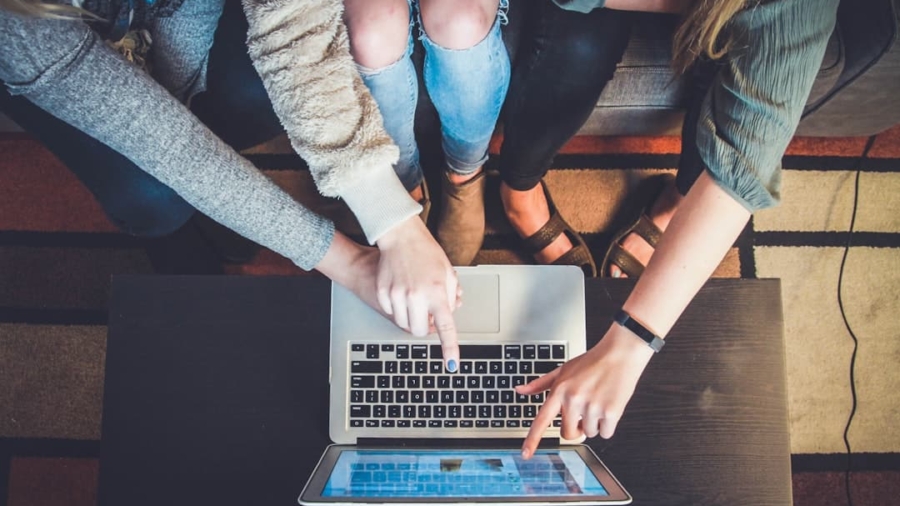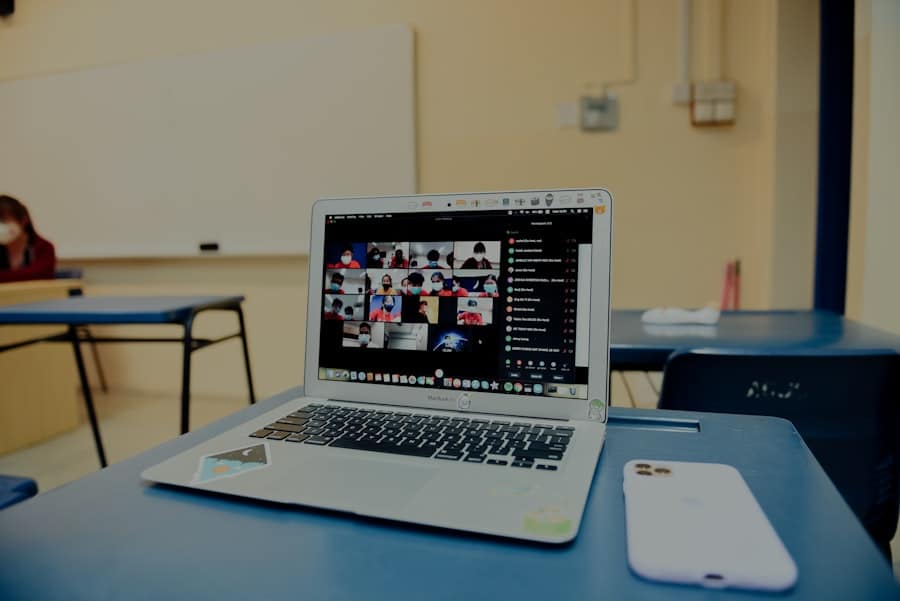Mixed reality (MR) represents a transformative intersection of the physical and digital worlds, allowing users to interact with both real and virtual elements in a seamless manner. In the context of education, MR has emerged as a powerful tool that enhances learning experiences by providing immersive environments where students can engage with content in innovative ways. Unlike traditional virtual reality (VR), which immerses users entirely in a digital environment, or augmented reality (AR), which overlays digital information onto the real world, mixed reality combines these elements, enabling a more interactive and engaging educational experience.
This technology has the potential to revolutionize how educators deliver content and how students absorb information, making learning more dynamic and personalized. The integration of mixed reality into educational settings is not merely a trend; it reflects a broader shift towards experiential learning. As educators seek to foster deeper understanding and retention of knowledge, MR offers unique opportunities for students to visualize complex concepts, conduct virtual experiments, and collaborate with peers in ways that were previously unimaginable.
For instance, students studying biology can explore the human body in 3D, manipulating organs and systems to understand their functions better. This hands-on approach not only enhances comprehension but also caters to various learning styles, making education more inclusive and effective.
Key Takeaways
- Mixed reality combines the physical and digital worlds to create immersive learning experiences in education.
- Mixed reality allows for personalized learning experiences, catering to individual student needs and learning styles.
- Implementing mixed reality in the classroom requires investment in technology, teacher training, and curriculum integration.
- Successful case studies of mixed reality learning show improved student engagement, motivation, and knowledge retention.
- Challenges in mixed reality education include cost, access to technology, and ethical considerations, but the future holds promise for enhanced personalized learning experiences.
The Benefits of Mixed Reality for Personalized Learning
One of the most significant advantages of mixed reality in education is its ability to facilitate personalized learning experiences. In traditional classroom settings, instruction often follows a one-size-fits-all model, which can leave some students disengaged or struggling to keep up. Mixed reality allows educators to tailor lessons to individual needs, preferences, and learning paces.
For example, a student who excels in visual learning can benefit from MR simulations that provide rich visual contexts for abstract concepts, while another student who learns better through hands-on activities can engage with interactive models that allow for experimentation and exploration. Moreover, mixed reality can provide immediate feedback to learners, enabling them to understand their progress and areas for improvement in real time. This instant feedback loop is crucial for personalized learning, as it empowers students to take ownership of their educational journeys.
For instance, an MR application designed for mathematics could present problems at varying levels of difficulty based on a student’s performance, ensuring that they are consistently challenged without becoming overwhelmed. This adaptability not only enhances engagement but also fosters a growth mindset, encouraging students to embrace challenges as opportunities for learning.
Implementing Mixed Reality in the Classroom
The successful implementation of mixed reality in educational settings requires careful planning and consideration of various factors. First and foremost, educators must assess the technological infrastructure available within their institutions. This includes ensuring that classrooms are equipped with the necessary hardware, such as MR headsets or compatible devices, as well as reliable internet connectivity to support cloud-based applications.
Additionally, teachers need access to training and professional development opportunities to become proficient in using MR tools effectively. Curriculum integration is another critical aspect of implementing mixed reality in the classroom. Educators must identify specific learning objectives that can be enhanced through MR experiences and design lessons that incorporate these technologies meaningfully.
For example, a history lesson on ancient civilizations could be transformed into an immersive experience where students explore virtual reconstructions of historical sites, allowing them to engage with the material in a way that textbooks alone cannot provide. Collaboration among educators is also essential; sharing best practices and resources can help create a cohesive approach to integrating mixed reality across different subjects and grade levels.
Case Studies of Successful Mixed Reality Learning
Numerous educational institutions have begun to harness the power of mixed reality, yielding impressive results that highlight its potential in enhancing student learning outcomes. One notable example is the University of Illinois at Urbana-Champaign, where researchers developed an MR application called “The Virtual Reality Anatomy Lab.” This program allows medical students to explore human anatomy in three dimensions, providing an interactive alternative to traditional cadaver-based learning.
Another compelling case study comes from the K-12 sector, where schools have implemented MR technology to enhance science education. In a pilot program at a middle school in California, students used MR headsets to conduct virtual chemistry experiments that would be too dangerous or impractical in a physical lab setting. The results were striking: students demonstrated a deeper understanding of chemical reactions and safety protocols, as well as increased enthusiasm for science as a subject.
These case studies illustrate not only the effectiveness of mixed reality in promoting active learning but also its ability to inspire curiosity and passion for academic subjects.
Overcoming Challenges in Mixed Reality Education
Despite its many benefits, the integration of mixed reality into education is not without challenges. One significant hurdle is the cost associated with acquiring and maintaining MR technology. Schools often operate under tight budgets, making it difficult to invest in the necessary hardware and software.
Additionally, ongoing maintenance and updates can strain resources further. To address this issue, educational institutions may need to explore partnerships with technology companies or seek grants specifically aimed at funding innovative educational initiatives. Another challenge lies in ensuring equitable access to mixed reality experiences for all students.
Disparities in technology access can exacerbate existing inequalities in education. To mitigate this issue, schools must prioritize inclusivity by providing devices for students who may not have access at home or by creating community-based programs that allow broader access to MR technologies. Furthermore, educators must be mindful of varying levels of digital literacy among students; comprehensive training programs can help bridge this gap and ensure that all learners can benefit from mixed reality experiences.
The Future of Mixed Reality in Personalized Learning
Enhanced Interactivity and Realism
Innovations such as improved haptic feedback systems and more sophisticated artificial intelligence algorithms will enhance the interactivity and realism of MR experiences, making them even more engaging for students.
Data-Driven Insights for Personalized Learning
The potential for data analytics within mixed reality environments could revolutionize personalized learning further. By tracking student interactions within MR applications, educators can gain valuable insights into individual learning patterns and preferences. This data-driven approach will enable teachers to refine their instructional strategies continually and provide targeted support where needed.
A Cornerstone of Personalized Learning Frameworks
As educational institutions embrace these technological advancements, mixed reality has the potential to become a cornerstone of personalized learning frameworks.
Ethical Considerations in Mixed Reality Education
As with any emerging technology, the use of mixed reality in education raises important ethical considerations that must be addressed proactively. One primary concern is data privacy; MR applications often collect vast amounts of data on student interactions and performance. Educational institutions must ensure that they comply with relevant regulations regarding data protection and that they implement robust security measures to safeguard student information.
Additionally, there are ethical implications related to content creation within mixed reality environments.
Ensuring that diverse perspectives are reflected in MR content is crucial for fostering an equitable learning environment where all students feel valued and represented.
Furthermore, educators should consider the potential psychological impacts of immersive experiences on students; careful design and thoughtful implementation can help mitigate any adverse effects while maximizing the benefits of mixed reality.
The Impact of Mixed Reality on Student Learning
The integration of mixed reality into education has the potential to profoundly impact student learning by creating immersive, engaging experiences that cater to diverse learning styles and needs. As educators continue to explore innovative ways to leverage this technology, it is essential to address challenges related to access, equity, and ethical considerations proactively. By doing so, educational institutions can harness the full potential of mixed reality to foster personalized learning environments that inspire curiosity and drive academic success.
As we look toward the future, it is clear that mixed reality will play an increasingly vital role in shaping educational practices. With ongoing advancements in technology and a commitment to inclusivity and ethical considerations, mixed reality has the power to transform how we teach and learn, ultimately enriching the educational landscape for generations to come.
In a recent article on how to discover the best free software for home remodeling, the importance of utilizing technology to enhance learning experiences is further emphasized. Just as mixed reality is revolutionizing personalized learning paths for students, the use of innovative software can also greatly benefit individuals looking to remodel their homes. By leveraging these technological tools, individuals can create more efficient and effective plans for their projects, ultimately leading to a more successful outcome.
FAQs
What is mixed reality?
Mixed reality (MR) is a technology that combines elements of both virtual reality (VR) and augmented reality (AR) to create an interactive and immersive environment where physical and digital objects coexist and interact in real time.
How is mixed reality being used in education?
Mixed reality is being used in education to create personalized learning experiences for students. It allows students to interact with digital content in a more immersive and engaging way, making learning more interactive and effective.
How does mixed reality create personalized learning paths for students?
Mixed reality technology can adapt to the individual learning needs and preferences of students, providing them with personalized learning paths and experiences. This can include customized content, interactive simulations, and real-time feedback tailored to each student’s learning style and pace.
What are the benefits of using mixed reality in education?
Some benefits of using mixed reality in education include increased student engagement, improved retention of information, enhanced critical thinking and problem-solving skills, and the ability to provide personalized learning experiences for students with diverse learning needs.
Are there any challenges or limitations to using mixed reality in education?
Challenges and limitations of using mixed reality in education may include the cost of implementing the technology, the need for specialized training for educators, and potential technical issues or limitations of the hardware and software used for mixed reality experiences.



